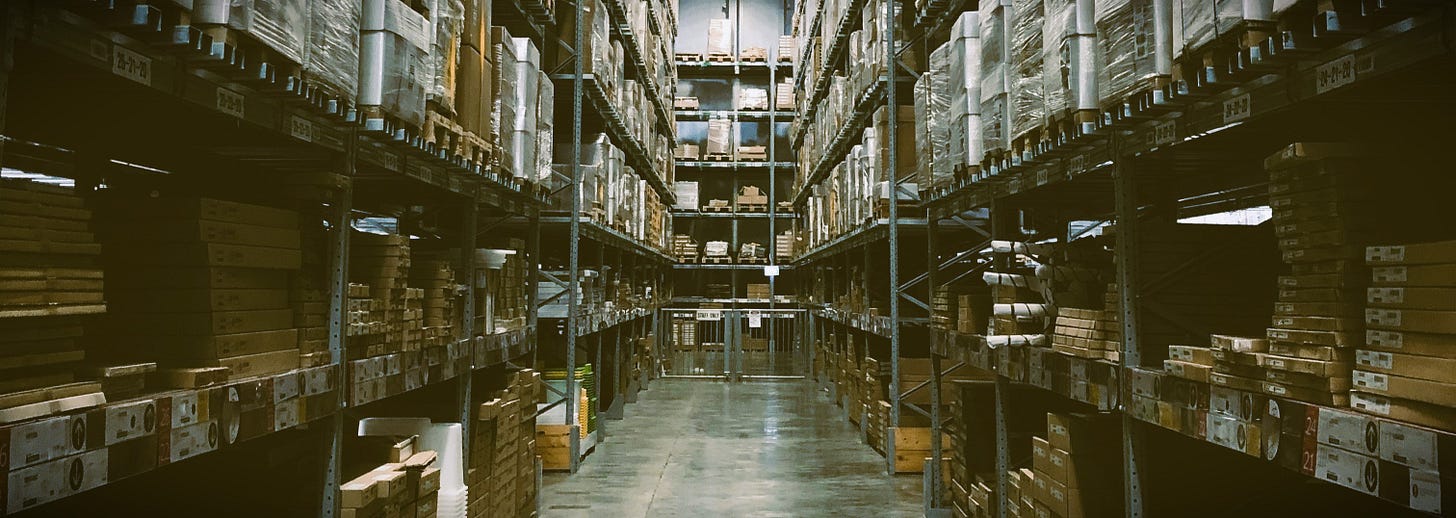Data is Key to Inventory Control
Any talk of manufacturing operations is moot when there is no material on hand to work with. Given that the very nature of the industry is to take raw materials and refine it into something usable this would seem self evident, right?
So then why do manufacturers constantly assert that one of their key challenges is the shortage of material? It would make sense that if you know what you want to build, then you should know what you need to have on hand.
Yeah… that's obviously not how it works in the real world. Our current supply chains are made up of vast, complex, interconnected nodes that each have any myriad combination of their own challenges that compound as we get closer to the end consumer.
While that's a fairly large topic, we’ll focus here on the internal challenges manufacturers face, in particular, on how to keep inventory organized and visible to decision makers, since this is likely self-induced and something that can be controlled.
Material flows through the facility
The journey of material in a facility is through different storage locations. Very rarely will material be brought into one location and then directly consumed from there.
Typically, material will go through a receiving location, storage location, work center, finished goods location and then shipping location, in a very basic form. As organizations grow and their needs change, this pipeline gets drastically more complex.
Handling material movement through a facility is the domain of warehouse management systems. But this advanced control of inventory is usually not needed right at the outset.
Boiling it down, the very basic types of locations needed are a shipping and receiving location, inventory storage locations, and work centers. Inventory management systems are adequate to handle this functionality.
Knowledge is power
Boiling it down even further, an inventory management system is just a different way of expressing a method of knowing exactly where inventory is at any given moment. This information allows managers to make better informed decisions in real time because it eases the collection and processing of data.
Without this information, the production team would not know how much work it could schedule, the procurement team could not know how much material it needed to buy, and the sales team would have no ability to make realistic commitments to customers. The status of a company's inventory is the common language that the operations team relies on to coordinate its activities, so accuracy is incredibly important.
Aside from inventory locations, businesses will often also want to track the status of their inventory according to various other dimensions, such as batch or serial numbers, non-conformance status, configuration, or a whole host of other material properties.
The system and reality must agree
By far the biggest challenge in this space is not necessarily in how to set up the system, but in ensuring that the system always reflects the reality on the ground. It's easy to establish three types of inventory locations and decide to track material by batch number.
What's much more difficult is developing the internal processes that ensure the proper data is being accurately passed into the system. Every additional dimension that needs to be tracked adds an extra data point to every transaction, of which the associated overhead cannot be ignored and, in most cases, must be automated away.
Too often during system design, the ease with which the software can process data makes it easy to transpose this impression onto the physical process. But this is a mistake. The physical process of collecting the data, transmitting it, and then driving correct actions as a result all need to be thought of throughout the implementation, checked regularly during rollout, and revisited periodically to guarantee fidelity.
The challenge of balance
When the driving force behind the implementation of an inventory control system is the need for the ability to answer business questions, leaders must balance this with the potential difficulty of data collection.
Similarly, these competing interests parallel the tradeoffs that managers make when deciding how much inventory to keep on hand to prevent stock-outs while also managing their cash flow. Proper inventory control facilitates the maintenance of this balance.
When reality and the system agree, and the organization present in the system manifests itself in the team’s real world processes, the company has effectively removed itself as a source of internally-induced friction to its parts shortage problem.
A company that keeps its organizational system as complex as needed, but as simple as possible, and stays within the resulting structure, will find that it has achieved proper inventory control and can answer almost any question it has about it’s inventory.
Thank you for reading The Value Add. This post is public so feel free to share it.


